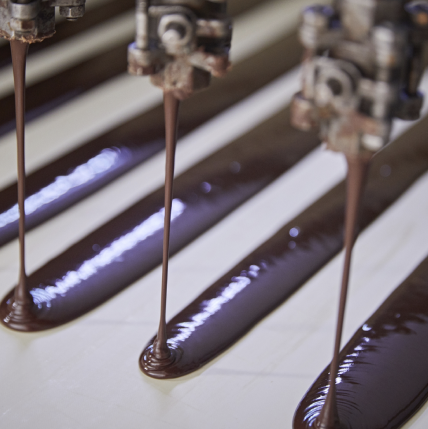
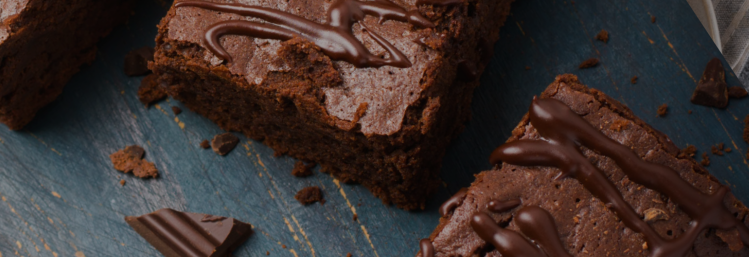
Application
From extrinsic and intrinsic color.
From Dutched to Natural.
Cocoa powder in application
The two major characteristics when distinguishing different types of cocoa powder are the amount of fat remaining (the cocoa butter content), and the level (or absence) of alkalization involved in the ’Dutching’ process.
In order to get the most out of these cocoa ingredients and understand their potential, it is important to understand how these components work. We have put together this short knowledge page to help manufacturers and chefs navigate these variations and explore the world of cocoa powder.
![]()
![]()
Dutching process
![]()
Fat content
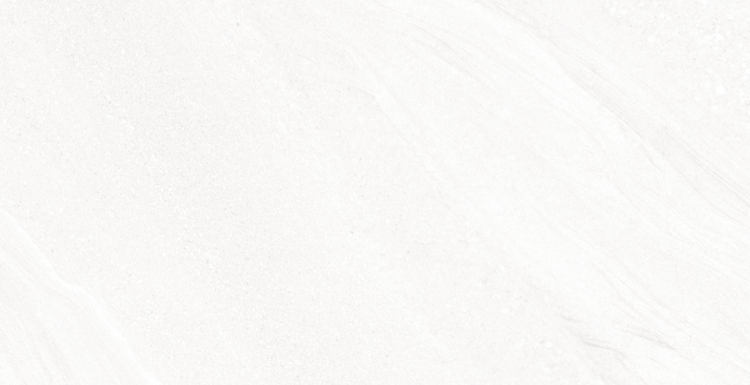
Key differences between the extrinsic (dry) and intrinsic (wet) color of cocoa powder
Extrinsic (or dry) color: This is the color that is seen before combining the dry powder with other substances. Intrinsic color: This color is revealed when the powder is combined with a wet substance such as water, dairy, or fat. To the right are examples of how color can vary between intrinsic and extrinsic, specifically when they are mixed with water. The color of each type of cocoa powder can vary quite dramatically between the different forms. Keep in mind that when the cocoa powder is in its extrinsic (dry) form it will not look the same when combined with other ingredients. Let's take a closer look at how this works with the examples of deZaan's TrueDark (N11D) and N23N cocoa powders.

TrueDark (N11D)
A closer look at TrueDark (N11D) & N23N cocoa powders
N23N is darker in its extrinsic (dry) form because of its higher fat content. Due to the more significant amount of fat, an optical effect occurs involving the solid particles that affects the light absorption. However once combined with a wet substance this effect is dissipated and TrueDark (N11D) becomes the darker color.

True Dark (N11D)
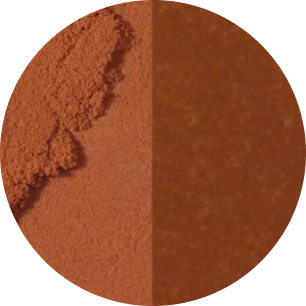
N23N
Cocoa powders higher in fat will always appear darker in their extrinsic (dry) form versus their low-fat equivalents.
This difference between the intrinsic and extrinsic color is why it is extremely important to try the cocoa powder in application before judging it’s color.
The Dutch Process vs. Natural Cocoa Powder
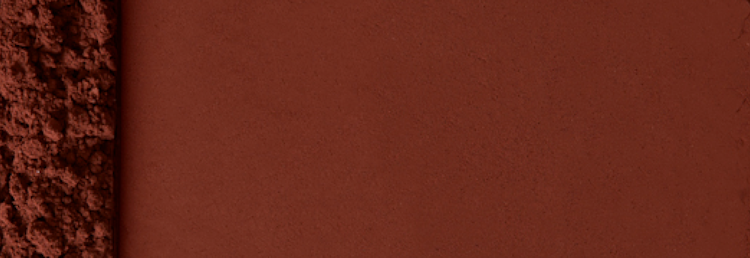

Dutched
In the 19th Century, Dutch chemist and chocolate maker Coenraad Johannes van Houten introduced the process of Dutching (or alkalization – these terms are interchangeable). This process resulted in cocoa powder with stronger and fudgier flavor, as well as a darker and more intense color.


Natural
The so-named 'Dutching' process involves treating the cocoa nibs (or in some cases the cocoa cake) with an alkaline solution such as potassium carbonate or sodium hydroxide. Consequently, dutched cocoa powders have a higher pH than Natural (non-dutched) cocoa powders.
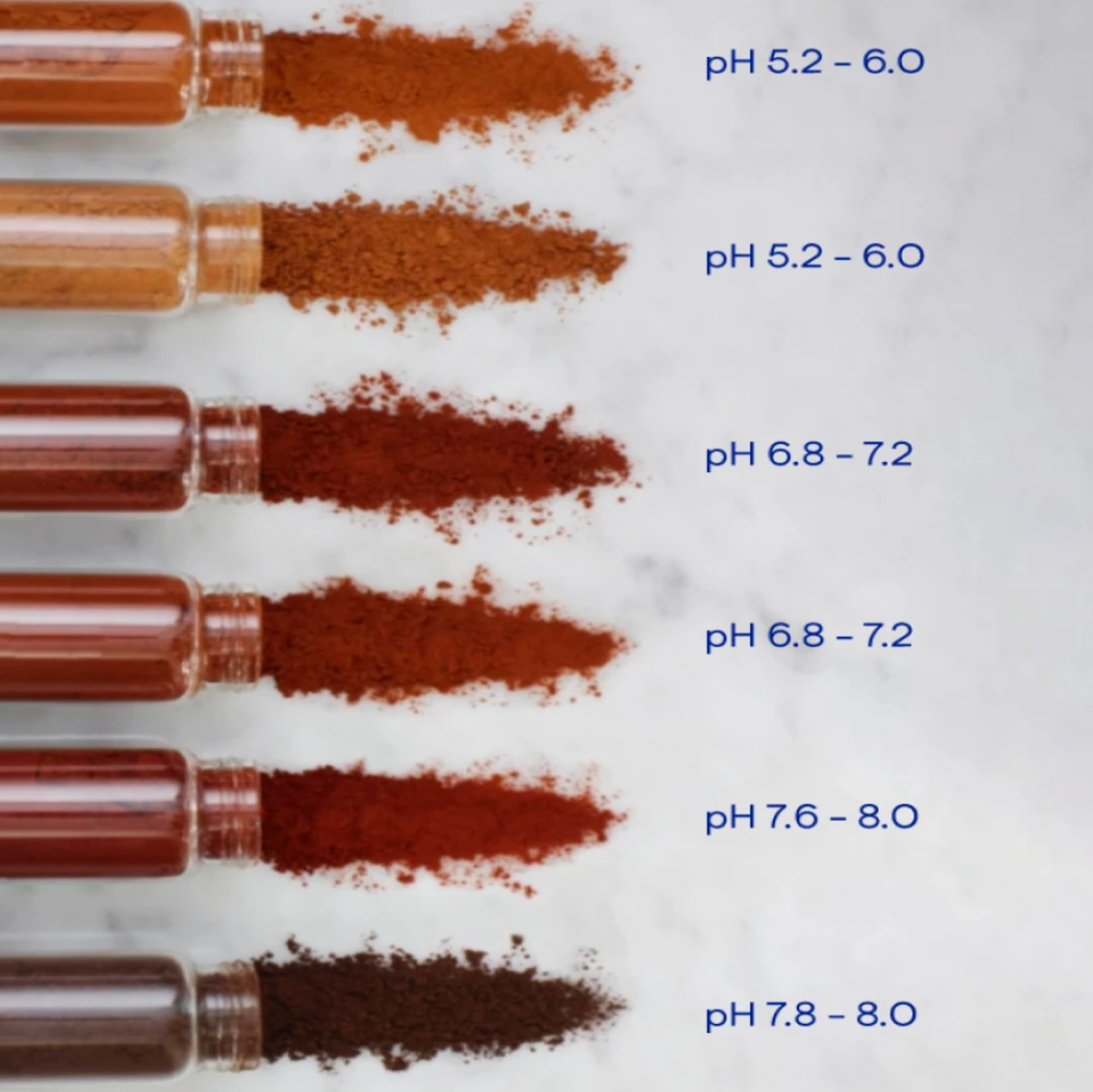
How does Dutching affect
the color & taste of the cocoa powder?
Cocoa powders that are made through the Dutch process are darker and are fudgier in flavor. This darker color results from several different factors such as fat content, cocoa bean origin, roasting time, and of course, the Dutching process. The most significant factor to consider is the connection between the dark color and the pH of the cocoa.
Cocoa powders made through the Natural process are lighter and have a fruitier flavor. Although these characteristics are very telling of a cocoa powder, the best way to determine a cocoa powder's flavor is by implementing it in an application recipe.
How Dutching impacts texture & taste
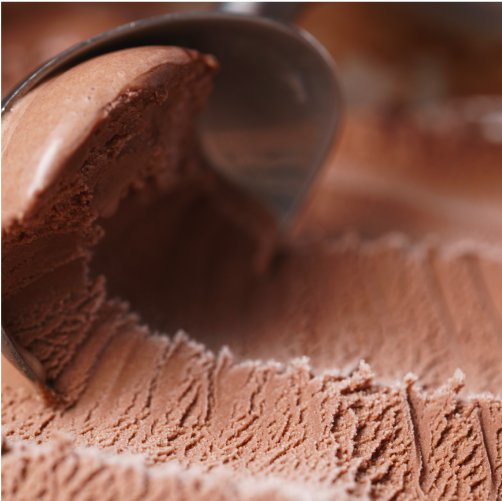
Ice Cream
The Dutching process improves water-binding properties of a cocoa powder. As a result, a Dutched cocoa powder with a high pH (7.5 and above) will attract more water in the ice matrix. This will create a thicker structure with a slower melting time and premium texture. This is true whether you’re making a sorbet using water only or a gelato using milk (as milk contains water).
When making ice cream, choose a cocoa powder with a higher pH for a premium effect.
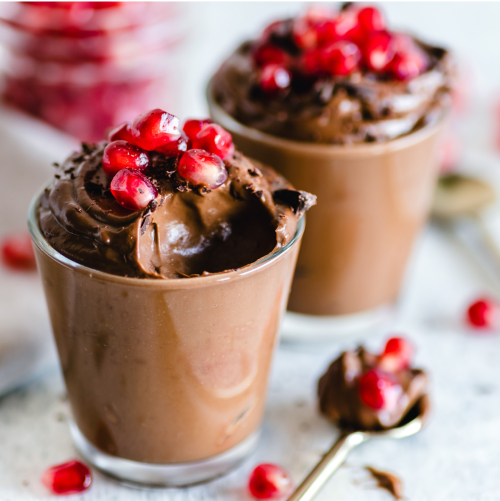
Desserts
When choosing a cocoa powder for a dessert, opt for a low/medium alkalized powder. Cocoa powders with a pH above 7.5 will give desserts a thinner texture as the high pH damages the stability of the internal structure that combines fats and proteins.
If you want to enjoy a cocoa powder with a higher pH such as a very red or dark black powder, consider adding thickener to your recipes, such as corn-starch or locust bean gum.

Chocolate Milk
A highly alkalized cocoa powder will curdle chocolate milk over time. This is because milk has a pH of 6.4. Any powder that is too far away from this pH (i.e. any cocoa powder that is above 7.4 or below 6) will destabilize the milk, separating it into two phases.
When selecting a powder for chocolate milk, choose a dutched version of the powder with a pH similar to milk. This can immensely improve taste, making it the best cocoa powder for hot chocolate.

Cakes & Breads
The Dutch process improves water-binding properties of a cocoa powder, meaning that cocoa powders with a high pH (7.5 and above) attract more water and create a stiffer dough. This stiffness can be addressed by increasing water content or reducing the amount of flour in a dough.

Baking recipes that include leavening agents
Baking Soda
When following a recipe containing baking soda, consider the pH of the cocoa powder you’re using. A natural powder (which has a low pH) will react with the baking soda to create carbon dioxide, resulting in an airy and drier creation. A dutched powder (which has a higher pH) will not cause this same reaction, resulting in something dense and fudgier.
Depending on how you would like your recipe to turn out, consider reducing the amount of baking soda if you use a high pH cocoa powder such as one of our black powders. You can also add baking soda if you use a low pH powder. Cocoa powders with a neutral pH (around 7) should not require any amendments to the recipe.
Baking Powder
The best cocoa powder for baking is a powder that is already balanced both at the base and with the acid. It won’t react with any acidity in the cocoa powder. Therefore, you are free to choose whatever type you like without affecting the rising process.
Cocoa powder & fat content
Fat content in cocoa powders is the percentage amount of residual cocoa butter particles that remain in the cocoa powder. In general, this corresponds to:
Low-fat cocoa powder: contains 10-12% fat (residual cocoa butter)
High-fat cocoa powder: contains 20-22% or 22-24% fat (residual cocoa butter)
The effects of fat content on cocoa powder color
Dry, high-fat cocoa powders appear brighter and darker than low-fat cocoa powders. This optical effect contributes to the way fat crystals absorb light.
When combined with other ingredients, fat crystals begin to dissolve into the medium, high-fat cocoa powders making the cocoa powder appear lighter.
The effects of fat content in different foods

Ice Cream
High-fat cocoa powders, like bright red powders, are the ideal base for ice creams. When combined with dairy, the soft fats of these cocoa powders create a delectably creamy and pleasingly premium texture, rounded in taste and satisfying in mouthfeel.

Desserts
As with ice creams, the dairy in many desserts combines with high-fat cocoa powders to create a melt-in-your-mouth, creamy texture. When it comes to pastries such as chocolate cakes and other baked goods, choose a high-fat cocoa powder for stability.

Chocolate Milk
This difference between the intrinsic and extrinsic color is why it is extremely important to try the cocoa powder in application before judging it’s color.
For chocolate milk or hot cocoa, it is also important to choose a high-fat cocoa powder for stability. In industrial production, the homogenization process will disperse fat from milk and high-fat cocoa powder, resulting in tiny fat particles that create a strong network and a long-lasting drink. However, if you want to use a low-fat cocoa powder with a specific taste, like TrueDark (N11D), you can add a stabilizer like carrageenan to strengthen the drink’s network.

